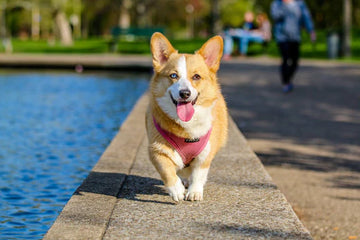Positive reinforcement training is one of the most effective methods to teach your dog good behavior. By rewarding desired actions with treats, you encourage your dog to repeat the behavior, making training both enjoyable and successful. In this blog, we’ll explore how to use treats for positive reinforcement, ensuring your dog learns quickly and enjoys the process.
What Is Positive Reinforcement Training?
Positive reinforcement involves rewarding your dog immediately after they perform a desired behavior. Treats are an excellent motivator because dogs love food, and using them helps your dog associate the behavior with a positive outcome. Over time, this method teaches your dog to repeat good behavior consistently, making training much more effective.
Choosing the Right Treats
- High-Value Treats: Pick treats your dog loves—small pieces of chicken, cheese, or commercial training treats. High-value treats are especially important in the early stages of training when your dog is learning new behaviors. The more your dog loves the treat, the more motivated they’ll be to follow commands.
- Soft, Easy-to-Chew Treats: Opt for treats that your dog can eat quickly. Soft treats allow for quick consumption, keeping your dog focused during training sessions without long pauses for chewing.
- Healthy Options: Since you’ll be giving treats frequently, opt for low-calorie options to avoid overfeeding. Lean meats, veggies like carrots, or specially designed low-calorie dog treats help ensure your dog stays healthy during training.
Timing Is Key
Timing is everything in positive reinforcement training. Give your dog a treat immediately after they perform the desired behavior. The quicker the reward follows the action, the stronger the association between the behavior and the reward. Delayed rewards may confuse your dog, reducing the effectiveness of the training.
For instance, if teaching your dog to “sit,” offer the treat the moment their bottom touches the ground. This helps them link the action directly to the treat, making the learning process faster and clearer.
Shaping Behavior with Treats
Training often involves breaking down complex behaviors into smaller, manageable steps. Treats help reinforce each step in the process, a technique known as "shaping." If you’re teaching your dog to “stay,” start by rewarding them for staying in place for just a few seconds. Gradually increase the duration before offering the treat, allowing your dog to master the behavior step by step.
This gradual approach keeps your dog motivated and ensures they don’t become overwhelmed by a complex command.
Phasing Out Treats
While treats are crucial in the beginning stages of training, the goal is to eventually phase them out. Once your dog consistently follows a command, start reducing the frequency of treats, rewarding them every other time they perform the behavior. Over time, replace treats with praise, petting, or toys.
This helps ensure your dog continues to follow commands without becoming dependent on treats for motivation.
Pairing Treats with Praise
Treats work best when paired with verbal praise. Saying “good dog” in a happy tone while giving a treat reinforces the behavior and builds trust between you and your dog. Eventually, verbal praise and gestures like petting can become rewards on their own, further reducing the need for treats.
Preventing Overfeeding
It’s easy to overfeed during training sessions, especially if you’re giving treats frequently. To prevent this, use very small treat portions or your dog’s regular kibble as rewards. Balancing treats with your dog’s daily meals helps keep their weight in check while still allowing you to reward their progress.
Keep Training Sessions Short
Dogs have limited attention spans, so it’s important to keep training sessions short—around 10-15 minutes. This ensures your dog stays engaged and enjoys the process. If your dog becomes distracted or loses interest, take a break and return to training later. Ending each session on a high note, with a successful command and reward, reinforces positive behavior.
Using Treats to Correct Behavior
Treats aren’t just for teaching new commands—they’re also effective for correcting problem behaviors. For example, if your dog barks excessively or jumps on guests, use treats to encourage calm behavior. When your dog stays quiet or greets guests politely, reward them to reinforce this positive change. Over time, your dog will learn that calm, appropriate behavior leads to treats, while undesirable behavior does not.
Conclusion
Treats are a powerful tool in positive reinforcement training, helping to shape your dog’s behavior effectively and enjoyably. By choosing the right treats, timing rewards correctly, and gradually phasing out treats as your dog masters commands, you can build a strong bond and teach your dog important skills. Using treats wisely ensures training sessions are fun, effective, and rewarding for both you and your dog.





